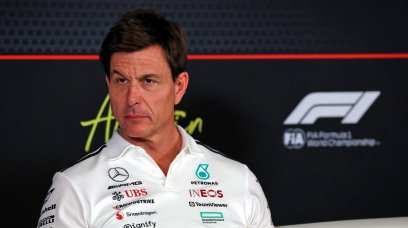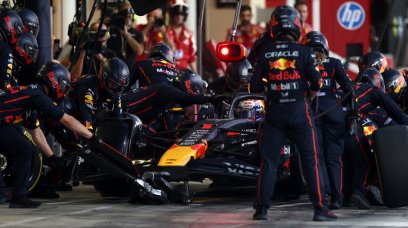The reason for Red Bull's double retirement from the season-opening Grand Prix in Bahrain is yet to be confirmed by the team, two days on from the race. Having looked set for second- and fourth-place finishes with Max Verstappen and Sergio Perez respectively, as the race entered the final handful of laps, Red Bull met with disaster as Verstappen slowed, was overtaken, and eventually crawled to a halt in the pit lane. Mere minutes later, Perez was out on the spot when his engine switched off as he negotiated his way through Turn 1 on the final lap. The near-identical failures, both in circumstance and timing, have raised all sorts of theories as to what might have occurred – the official line being there was some sort of unforeseen issue with the fuel system that resulted in an inability to pick up the fuel. However, Red Bull's problem may not have arisen due to any particular broken or malfunctioning part, but rather by a design issue related to what occurs when the fuel level within a tank drops to near-empty.
Was 'fuel cavitation' to blame for Red Bull's woes?
A curious phenomenon called 'fuel cavitation' may have been to blame for the double retirement, RacingNews365.com understands. When a fuel tank empties, the last few drops of liquid will move around the tank due to the loads being applied to it as the driver accelerates, brakes or steers. The movement of the fuel results in an increase in temperature of the liquid. With the temperature rising, bubbles can form within the fuel – this results in the pump then having to deal with a mixture of air and fuel passing through. With the temperature of the pump also rising as a consequence, this can lead to damage being incurred. Verstappen's car showed all the hallmarks of the issue, as he slowed down on track complaining about a lack of power – the pump was still working sufficiently to get fuel into the power unit and get him back to the pits. Perez's failure may have been more sudden, with the pump no longer able to feed fuel to the engine and causing the immediate switch-off.
Why were Red Bull caught out in Bahrain?
The issue triggered by the low fuel sloshing around in the tank is an easy one to replicate and test – but that doesn't necessarily mean Red Bull actually did a representative low-fuel longer run during the pre-season tests in Barcelona or Bahrain. If fuel cavitation is the issue that caused the double retirement, running some laps with a low fuel load should, in theory, have allowed Red Bull to spot the issue with the RB18 in advance. However, RacingNews365.com understands that Red Bull did carry out some low-fuel testing, and that there are some extra variables resulting in the team having to do more extensive investigations into the issue. Several factors may have played a part, such as the extent of the fuel cavitation under race conditions, taking into account particular speeds and frequencies, the G-forces involved, and even the condition of the tyres. For example, newer tyres would allow for higher cornering speeds. Another consideration is that of the temperature of the car itself, given that a car being driven on the edge for 90 minutes will be running hotter than a car with low-fuel on track for 10 minutes. Another significant factor, which also needs extensive evaluation, is that of the new E10 fuel. With a higher ethanol count, increasing to 10 per cent this season, might the process of fuel cavitation have occurred more quickly? RacingNews365.com understands that Red Bull could explain the issue within the next 24 hours.
Most read







